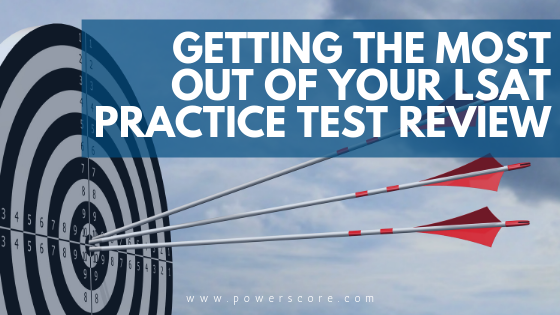If you’ve been studying for the LSAT, you already know that practice tests are a valuable part of your preparation. It’s helpful to see how you’re scoring, but the potential benefits of taking PTs go beyond tracking your performance. You can begin to derive those benefits from the outset, well before you master every LSAT concept. With each PT you take, you can increase your familiarity with the language, logic, and pacing of the test. You will also develop your mental endurance, a necessity for a strong performance on the LSAT.
You may have seen our articles about the ideal way to take a PT and how to review practice questions. If not, go check them out too. In this post, we discuss how to get more out of your practice test review. That is, what to do after you complete any given PT. Let’s start with the practice test itself. Take it seriously and be strict with the time! Here’s a free virtual proctor that’s easy to use and obviates the need to check your watch or set timers. We also advise taking a photocopy of the test… we’ll explain shortly.
Evaluate Your Test After Scoring It
Once you have completed your practice test, check your answers. Make a list of the ones that you missed—just the question numbers, not the correct answers. Fight to urge to immediately revisit each question you got wrong, looking at each right answer and “working backwards.” The list that you just created can provide a great resource; it is custom made for and by you. It includes the questions that gave you trouble regardless of whether those issues arose from actual difficulty or thoughtless error.
Take a Break and Revisit
Next, take a short break! Then, go back to the test and revisit the questions that you got wrong. Do this on a clean copy of the test—remember the photocopy we suggest you make? With that, you’ll be able to look at the questions without the advantage of any markings you made on the version you took. Do these questions off the clock. Take as much time as you need to understand the question and how best to approach it. Going through this process will allow you to derive far more value than those who simply look at each right answer, ask themselves “does that make sense?,” answer “yeah, I guess…” and then move on.
Truly Understand Your Errors
Before you move on, ask yourself a couple of questions. Do you have a sufficient understanding of the question? Would you get such a question correct if you were to encounter it again? If the answer is “yes,” that should be very reassuring because the LSAT has many, many recurring themes. If the answer is “no,” come visit our LSAT Forum. Students, instructors, course developers, and even Dave Killoran himself regularly respond to questions about specific LSATs as well as more general inquiries about the test and how to best prepare.



Leave a Reply